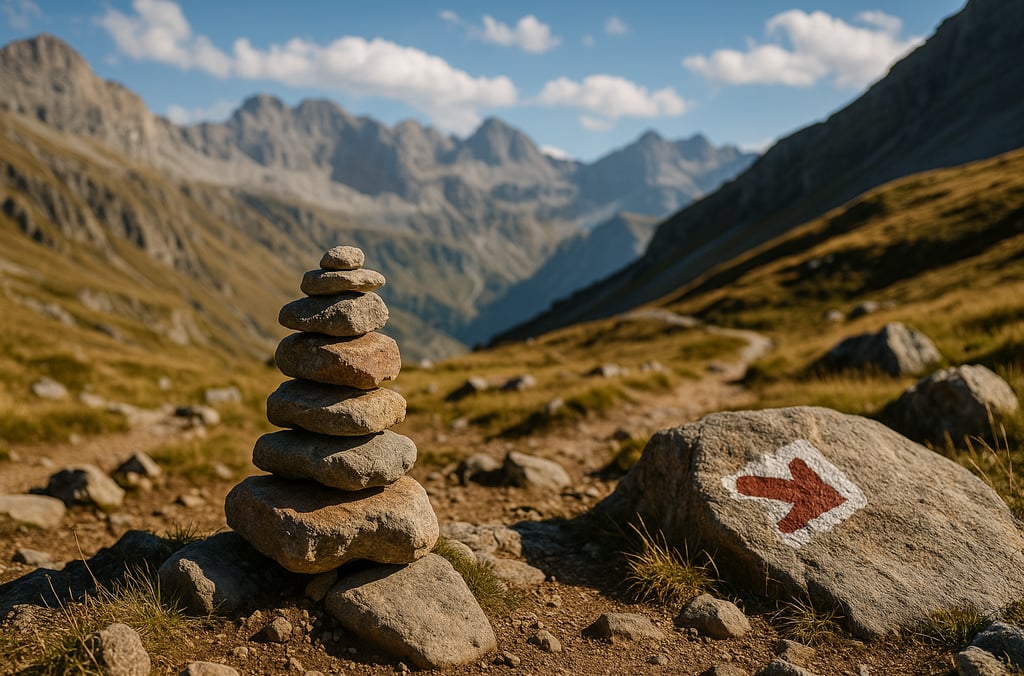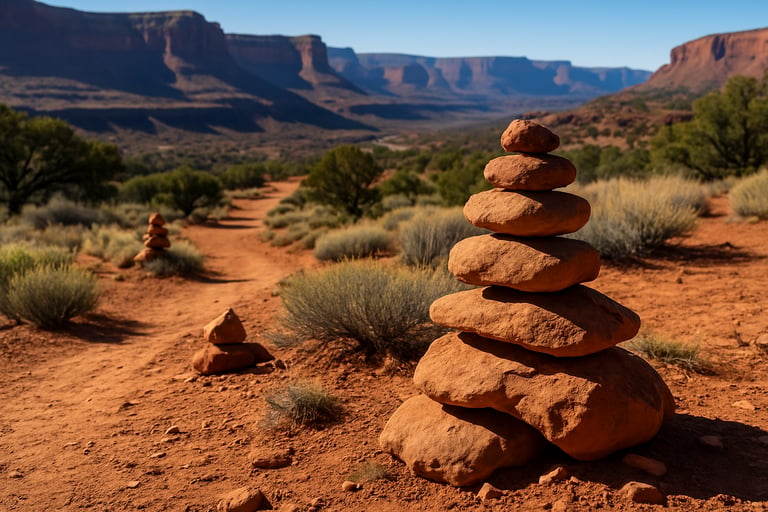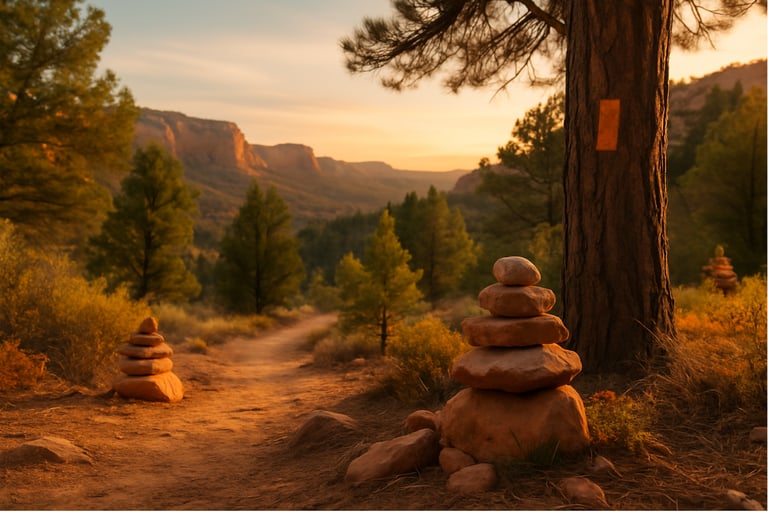Using Cairns & Trail Markers: Navigation Tips for Backcountry Travel & Survival
Learn how to use cairns, blazes, and trail markers for safe and effective backcountry navigation. This guide covers when to follow them, how to read them, and why traditional navigation still matters.


Using Cairns & Trail Markers: Navigation Tips for Backcountry Travel & Survival
Navigating the backcountry without getting lost is one of the most critical skills for any outdoor enthusiast. While GPS and maps are useful, traditional trail markers like cairns, blazes, and flagging tape remain essential in rugged environments where digital tools can fail.
In this guide, we’ll explore how to use cairns and other trail markers effectively so you can stay on course and travel with confidence in the wilderness.
What Are Cairns and Trail Markers?
Cairns are small, human made stacks of rocks that act as visible waypoints in natural landscapes. They’re commonly used to mark trails across rocky or alpine terrain where paths may be otherwise hard to see or remember. Trail markers can also include painted blazes on trees or boulders, ribbons or flagging tape, carved arrows on rocks, or other subtle indicators that help you follow a route without damaging the environment.
Each type of trail marker has its strengths. Cairns are highly visible in open or rocky areas, while blazes and ribbons are better suited for dense forests or areas with thick ground cover. Together, they form a reliable system of backcountry navigation.
When and Where to Look for Cairns
You’ll most often find cairns in remote or rugged areas where established trails might fade, such as alpine zones, desert landscapes, or riverbeds. Unlike a continuous dirt path, cairns appear intermittently, typically within visual distance of each other. The key is to always spot the next cairn before moving on from the last one.
In snowy or foggy weather, cairns may be obscured, so keeping your eyes up and scanning the horizon becomes especially important. If you lose sight of them, return to the last confirmed marker and look again from a different angle.
How to Read and Interpret Trail Markers
Understanding the language of trail markers is vital. A single blaze usually means you're on the correct path, while a double blaze—especially if the top mark is offset — can indicate a sharp turn or change in direction. Flagging tape is often used for temporary routes, such as during search and rescue operations or trail maintenance. For a deeper dive into navigating without modern tools, check out Navigating Without a Compass: Using the Sun, Stars, and Natural Landmarks in the Wilderness.
Cairns, when constructed responsibly, typically form a low pyramid with a flat rock on top pointing the direction of travel. But be cautious: not all cairns are legitimate. Sometimes hikers stack rocks recreationally, so always verify with your map or GPS if a cairn seems out of place.
Building or Reinforcing a Cairn (Only When Necessary)
While it might be tempting to build your own cairns to mark a new route, it's generally discouraged unless absolutely necessary. Unofficial markers can confuse other hikers or lead them astray. That said, in emergency scenarios where trail visibility is poor, you may build a cairn to retrace your steps or alert rescuers to your location.
Why Navigation Skills Still Matter in the GPS Era
Technology is helpful but it’s not failproof. Batteries die, devices get dropped, and satellite signals can vanish in deep canyons or thick forests. Understanding how to follow cairns and interpret trail markers ensures you have a reliable backup that works in any condition.
Learning to navigate using natural landmarks and traditional markers also boosts your situational awareness. Instead of staring at a screen, you’ll be tuned into your environment making you a safer and more capable backcountry traveler. You can also further your navigation confidence by learning the Top Five Orienteering Skills Everyone Should Know for Wilderness Survival.
Staying Safe and Oriented in the Wilderness
Using cairns and trail markers is about more than just staying on the right path — it’s about building the habits that keep you safe in the wild. Take time to scan your surroundings, confirm your route often, and never rely on a single navigation tool. When used together, trail markers, maps, and your own awareness can make backcountry travel smoother, safer, and far more enjoyable.
And, If you're concerned about getting lost, these 10 Essential Wilderness Navigation Tips to Avoid Getting Lost will help you travel smarter and stay safe. It’s also wise to know What to Do If You're Lost in the Wilderness: Navigation Strategies to Find Your Way Back, just in case things don’t go as planned.




© 2025. All rights reserved About | Privacy Policy | Terms and Conditions | Affiliate Disclosure | Disclaimer


